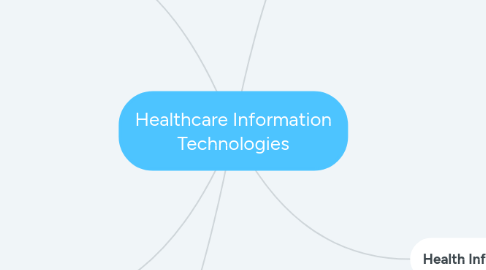
1. Electronic Health Records
1.1. Enhance physicians ability to provide high quality care
1.1.1. effective communication and engagement between patients and physicians should be of central importance
1.2. support team-based care
1.2.1. clinical staff to perform work as necessary to the extent of where their licensure permits
1.3. promote care coordination
1.3.1. track referrals and consultations - follow patients progress
1.4. product modularity and configurability
1.4.1. flexibility to meet individual practice requirements
1.5. reduce cognitive workload
1.5.1. should support medical decision making-manage information flow, adjust for context, environment, and user preferences
1.6. promote data liquidity
1.6.1. connected healthcare with other facilities such as hospitals, ambulatory care, laboratories, pharmacies, long term care settings
1.7. facilitate digital and mobile patient engagement
1.7.1. will work for health and wellness and the management of chronic illnesses
1.8. expedite user input into product design and feedback
1.8.1. incorporating end user feedback into the design and improvement of the product
2. Meaningful Use
2.1. electronic capturing of clinical data
2.2. EHRs used for increased exchange of information and continuous quality improvement at the point of care
2.3. requirements all physicians should follow
3. Mobile Health Apps
3.1. trackers & sensors
3.2. functionality
3.3. accuracy
3.4. safety & effectivness
4. Telemedicine
4.1. Store-and-forward
4.2. Remote Monitoring
4.3. Real-time interactive services
4.4. State Telemedicine Advocacy
4.4.1. physician licensure
4.4.2. insurance coverage of telemedicine
4.4.3. practice issues ex. establishment of patient-physician relationship
5. Health Information Exchanges
5.1. Geography
5.1.1. HIEs serve small geographic region or and entire state or multi-state region
5.2. Structure
5.2.1. conduits of health information or repositories of health data
5.3. Governance
5.3.1. legal infrastructure associated with HIEs
5.4. Disadvantages
5.4.1. fees may be chard per transaction, monthly or annually
5.4.1.1. cost of upgrading the offices information technology systems to meet HIE requirements
5.4.2. Liability concerns
5.4.2.1. data storage and management
5.4.2.2. data accuracy and completenes
5.4.2.3. decisions made with inaccurate data
5.4.2.4. availability of audit and access logs
5.5. Advantages
5.5.1. Access
5.5.1.1. patient data access is critical due to the physician establishing who will have access to the HIE
5.5.2. Laws/Regulations
5.5.2.1. federal and state laws apply to HIE including privacy and security of patients health care information
5.5.2.2. Meaningful Use of health information technology
5.5.3. HIPPA
5.5.3.1. any system used by HIE must comply with the privacy and security provisions of HIPPA
